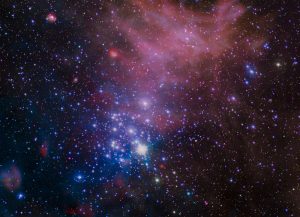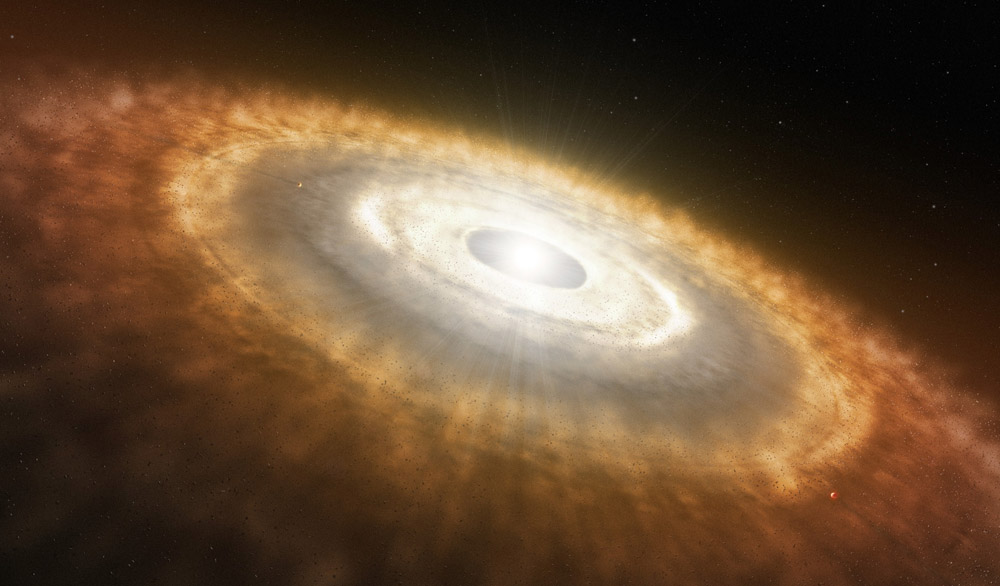A look back at our star’s youth: Astronomers have studied how sun-like stars evolved in their early days — and discovered something surprising in the process. Because young stars emit intense X-rays for longer than expected. Only after about seven million years does the intensity of this harsh radiation drop significantly. But this means that the disk of protoplanets and minor planets in our solar system also received more radiation.
Our sun, like most other stars, originated in a dense gathering of stellar siblings – it may have been Part of a binary star system. in a less than a million years It could have evolved from a pre-star core to a protostar in dense stellar nativity gas. After drawing most of its mass from its surroundings, the growing sun becomes a main-sequence star: the young star shrinks, getting hotter and more massive. This pressure continued until nuclear fusion ignited – and the stellar embryo became a new star.

What happens in a pre-main sequence star?
But what exactly was happening in the time leading up to fusion ignition has not yet been clarified. “The pre-primary sequence phase in particular has been relatively little studied because large, reliable numbers of such stars are hard to find,” explain Konstantin Gettman of Penn State University and colleagues. In particular, it is unclear how the magnetic field and radiation evolve in such stars — and how this affects the disk of already existing protoplanets and potential protoplanets.
Now the most comprehensive analysis of such pre-main sequence stars to date provides new insights into this crucial stage of stellar evolution. Getman and his team evaluated data from the Chandra X-ray telescope and the Gaia satellite for 6,000 sun-like stars between seven and 25 million years old. The stars, which weigh between 0.75 and 3.5 solar masses, are in the Late Premain Sequence stage. The astronomers combined the data with previous surveys of stars less than five million years old.
Intense radiation lasts longer
The analyzes revealed something surprising: Contrary to what was previously assumed, the strong X-ray radiation from proto-main sequence stars does not decrease steadily, but remains very high for several million years. A small star weighing 0.75 to one solar mass sets the colossal energy of 1031 Ergs are released per second as X-rays and intense ultraviolet light, astronomers have determined. That’s a thousand times more good than today’s sun.
Only from five to seven million years of age does the change become apparent—much later than previously thought: “As the late precession main sequence phase begins, the average X-ray brightness decreases rapidly, as the star approaches core ignition and fusion.” . , reported by astronomers.
The researchers explain this change by a fundamental restructuring in the star’s interior: in the case of a protostar, convection currents circulating the plasma still extend through the entire interior. With age, the convective zone shrinks and includes only the outer regions of the star. This, in turn, changes the physics of the solar dynamo and magnetic fields, which reduces the solid radiation emitted from the surface.
Consequences for the early solar system, too
Our sun can also gradually reduce its deadly intense X-ray and intense ultraviolet radiation only five to seven million years after its formation. “This should have important implications for the development of the proto-atmosphere of proto-planets and young planets,” the astronomers say. Because the solid stellar wind of the Sun in the pre-early main sequence blew all the unbound gas from the primordial cloud into space. In fact studies suggestThat the primordial gas of the solar system had largely disappeared after about four million years.
But with the loss of primordial gas, the developing planet loses the raw material needed for further growth of its gaseous envelope. As a result, the growth of gaseous planets stops and terrestrial planets can no longer increase their atmospheres. At the same time, strong stellar winds are eroding the atmospheres already formed around the young planets. Depending on their distance from the star and its mass, they could lose part or even all of their gas envelope again – ionize and then explode into space.
Earth has lost its primary atmosphere
But what does that mean for them Young land? As the researchers determined, the young Earth must have lost its entire primordial atmosphere of hydrogen and small amounts of helium and methane about two million years after the formation of the young sun. “However, if an Earth-like planet is massive enough, convection in the mantle can create a crust with enough volcanic and tectonic gas emissions to form a secondary atmosphere,” Gittmann and his team explain.
In the case of Earth, this created an atmosphere of nitrogen, carbon dioxide and water vapor. However: If a small planet formed this second atmosphere very early on and didn’t have a protective magnetic field yet, it too could be torn apart and eroded, astronomers have determined. It is unclear if this is also the case with Earth.
However, it seems clear that the environment of pre-major series stars isn’t a particularly fun place to be. Only when the fusion has ignited in the young star and its condition has stabilized will the protoplanetary disk also begin to rest and the planets and their atmospheres can evolve undisturbed. (The Astrophysical Journal, 2022; doi: 10.3847/1538-4357/ac7c69)
Source: Chandra X-Ray Centre

“Total coffee aficionado. Travel buff. Music ninja. Bacon nerd. Beeraholic.”








More Stories
Coral Seeding: Artificial Insemination Makes Coral More Heat Tolerant
Fear, Anger, and Denial: How People Respond to Climate Change – Research
LKH Graz: Using radiation to combat heart arrhythmias